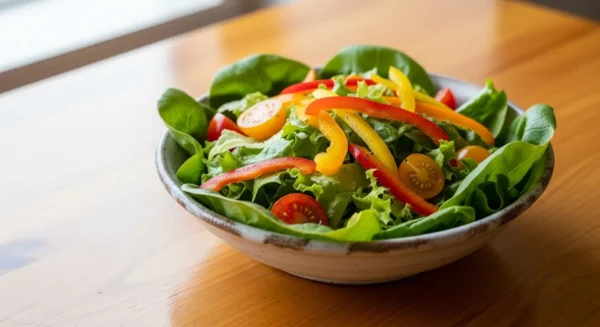
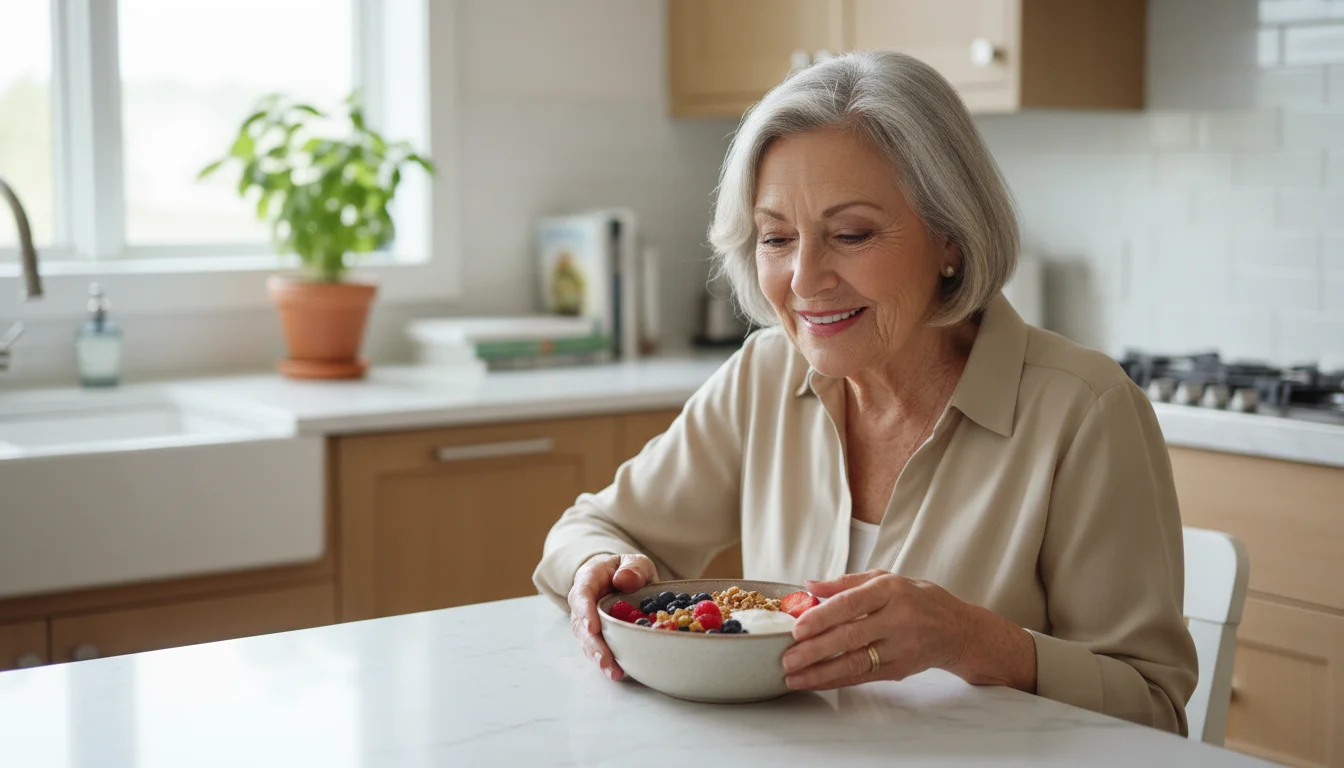
Introduction: Prioritizing Your Health with Sound Nutrition
As we age, our bodies change, and so do our nutritional needs. Navigating the world of health advice can feel overwhelming, especially when long-held beliefs are challenged by new information. For seniors, maintaining a healthy diet is a cornerstone of an active, independent life. Good nutrition supports everything from muscle strength and bone density to cognitive function and immune health. It can help manage chronic conditions like high blood pressure and diabetes, and it provides the energy needed to enjoy daily activities, hobbies, and time with loved ones.
Unfortunately, there is a great deal of misinformation surrounding diet and aging. These common nutrition myths can be confusing and, in some cases, even harmful. Believing that you need less of a certain nutrient or that you must cut out entire food groups can lead to deficiencies, weakness, and a lower quality of life. The goal of this article is to gently debunk some of the most persistent myths and replace them with clear, safe, and practical advice. Understanding the truth about senior nutrition is the first step toward building a healthy diet that fuels your body and mind for years to come. By focusing on evidence-based guidance, you can make confident choices that promote overall senior wellness and help you feel your best every day. Remember, small, informed changes can make a big difference.

Myth 1: You Need Less Protein as You Age
One of the most widespread and potentially damaging nutrition myths is the idea that seniors require less protein. Many people assume that since their activity levels may have decreased, their need for muscle-building nutrients also drops. The opposite is actually true. As we get older, our bodies become less efficient at processing protein, meaning we may need to consume more of it just to maintain muscle mass and strength.
This age-related muscle loss is a condition called sarcopenia, and it is a major contributor to frailty, falls, and a loss of independence. A diet lacking in adequate protein can accelerate this process, leading to weakness, slower recovery from illness or surgery, and a less robust immune system. Protein is essential not only for muscles but also for healthy skin, bones, organs, and hormones. It is a critical building block for nearly every cell in your body.
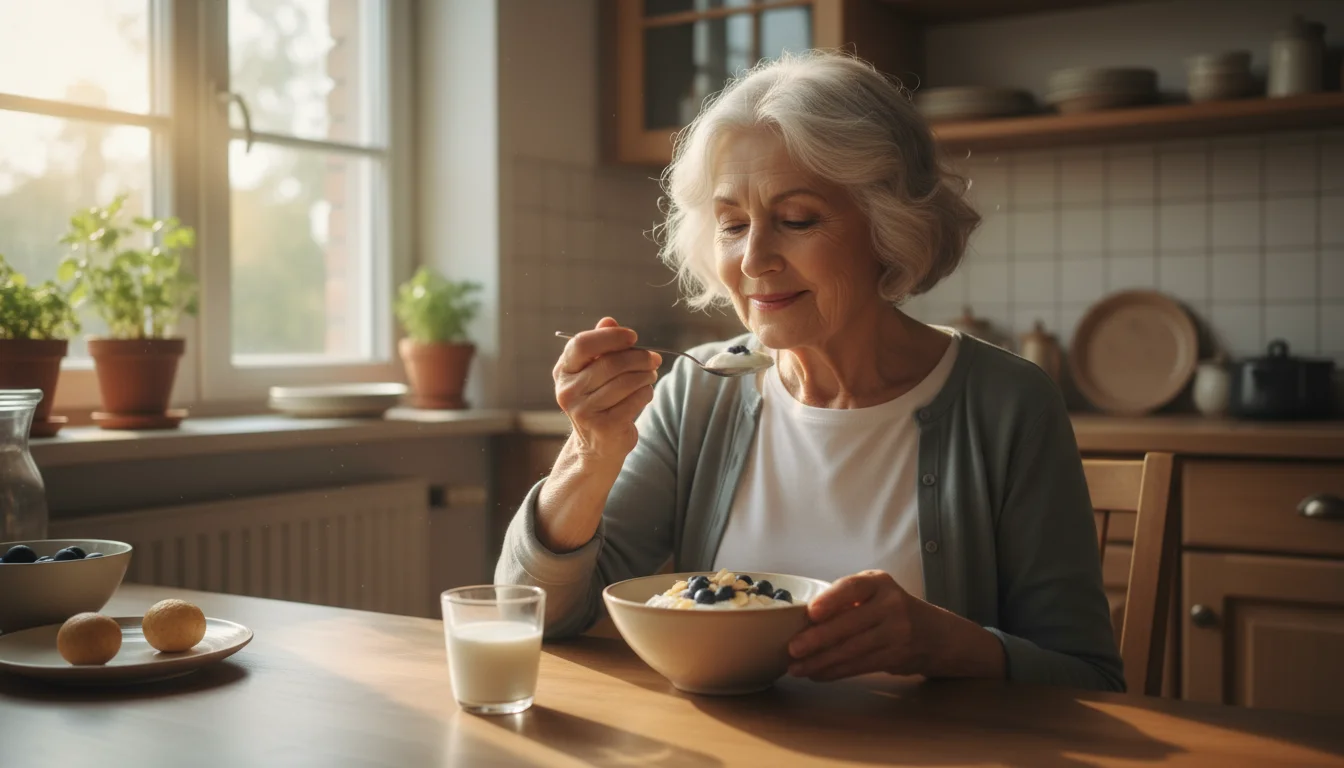
What to Do Instead: Prioritize Protein at Every Meal
Instead of reducing your protein intake, focus on including a good source of it with every meal. Spreading your protein consumption throughout the day is more effective than eating one large, protein-heavy meal. This approach gives your body a steady supply of the amino acids it needs for continuous repair and maintenance.
Excellent sources of protein that are easy to incorporate into a senior’s diet include:
- Lean Meats: Chicken breast, turkey, and lean cuts of beef or pork.
- Fish: Salmon, tuna, cod, and other fish are not only high in protein but also rich in heart-healthy omega-3 fatty acids.
- Eggs: An affordable, versatile, and complete protein source.
- Dairy Products: Greek yogurt, cottage cheese, and milk are excellent choices. Greek yogurt is particularly high in protein.
- Legumes: Beans, lentils, and chickpeas are fantastic plant-based protein sources that are also high in fiber.
- Tofu and Edamame: Soy-based products are complete proteins and great alternatives for those who eat less meat.
- Nuts and Seeds: A handful of almonds, walnuts, or a spoonful of peanut butter can add a protein boost to snacks and meals.
Aiming for about 25-30 grams of protein per meal is a great goal for most older adults. For example, a 3-ounce serving of chicken breast has about 26 grams, a cup of Greek yogurt has around 20 grams, and a cup of lentils has about 18 grams. Always check with your doctor or a registered dietitian to determine the right amount of protein for your specific health needs. Authoritative health information for seniors is provided by the National Institute on Aging (NIA) and the Centers for Disease Control and Prevention (CDC).
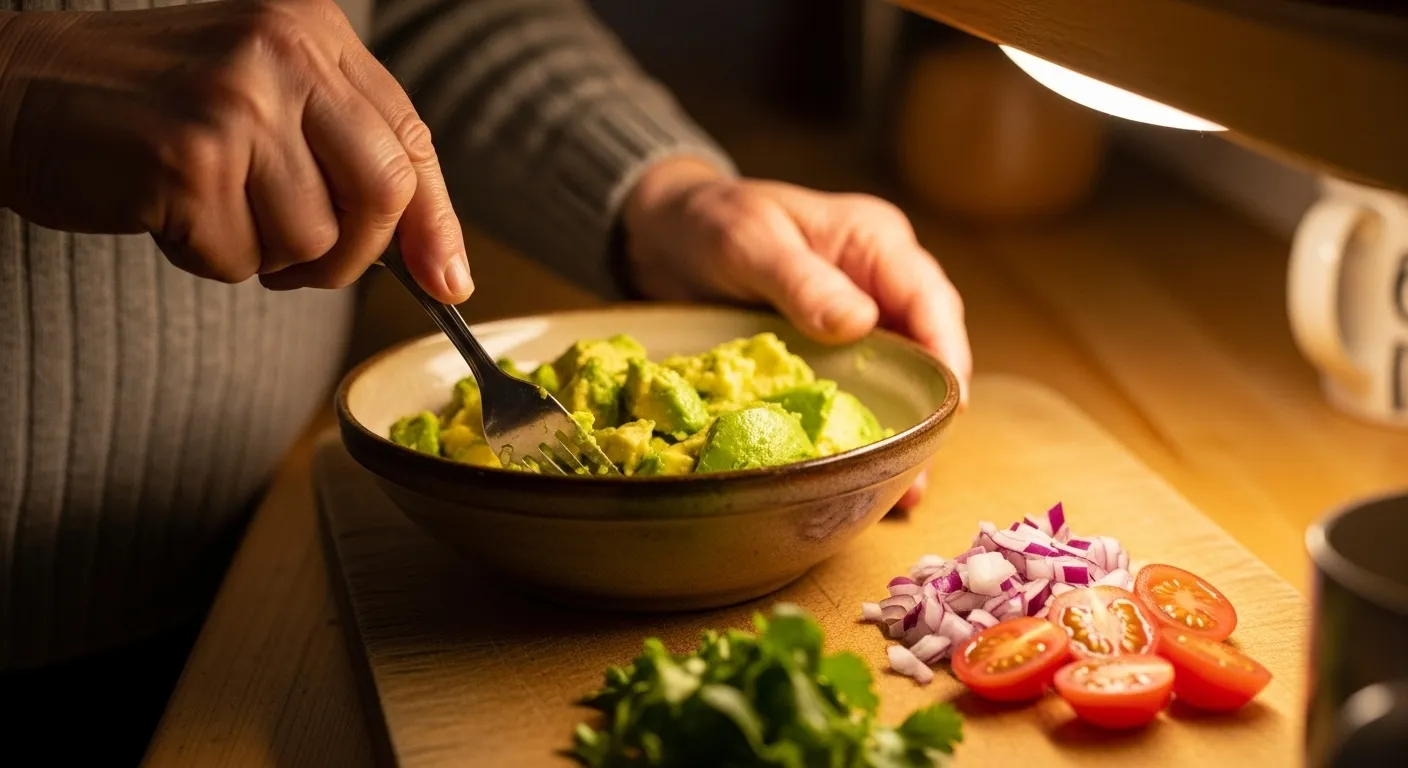
Myth 2: All Fats Are Bad for You
For decades, fat was unfairly labeled as the enemy of a healthy diet. This led many people to adopt low-fat or no-fat eating habits, often replacing fats with sugar and refined carbohydrates. We now understand that this is a harmful oversimplification. The truth is, not all fats are created equal. Our bodies need healthy fats to function properly. They are a major source of energy, help us absorb certain vitamins (like A, D, E, and K), and are essential for brain health and reducing inflammation.
The key is to distinguish between unhealthy fats and healthy fats. Unhealthy fats, such as saturated and trans fats found in processed foods, fried foods, and fatty meats, can raise bad cholesterol (LDL) levels and increase the risk of heart disease. On the other hand, healthy fats, including monounsaturated and polyunsaturated fats, can protect your heart, improve good cholesterol (HDL) levels, and support overall health.
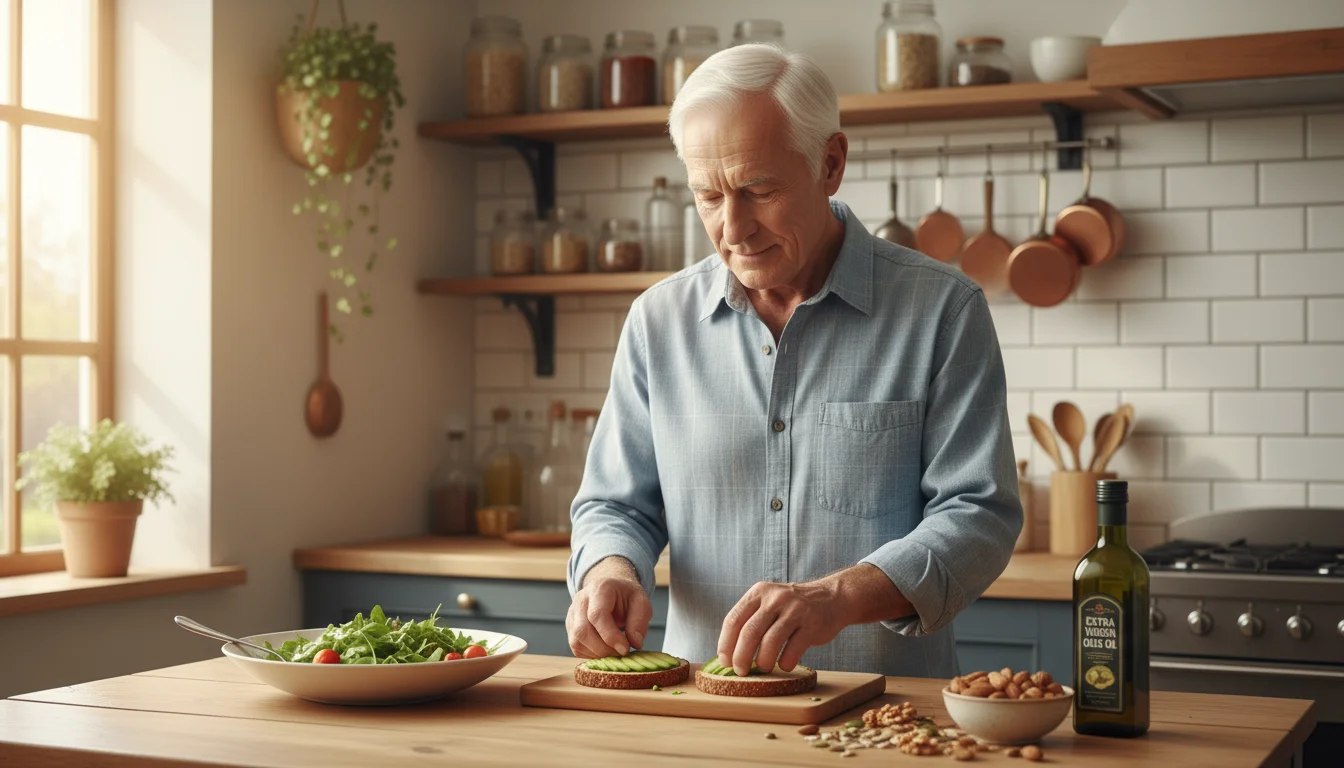
What to Do Instead: Choose Healthy Fats and Limit Unhealthy Ones
Embracing a diet rich in healthy fats is a powerful step toward better senior wellness. Instead of avoiding fat altogether, focus on making smart swaps. Replace sources of unhealthy fats with nutritious, beneficial alternatives.
Sources of healthy fats to include in your diet:
- Avocados: Rich in monounsaturated fats, they are great on toast, in salads, or as a side dish.
- Olive Oil: Use extra virgin olive oil for salad dressings and low-heat cooking. It is a staple of the heart-healthy Mediterranean diet.
- Nuts and Seeds: Walnuts, almonds, flaxseeds, and chia seeds are packed with healthy fats and other nutrients. A small handful makes a great snack.
- Fatty Fish: Salmon, mackerel, herring, and sardines are high in omega-3 fatty acids, which are particularly beneficial for brain and heart health.
At the same time, try to limit your intake of foods high in saturated and trans fats. These are often found in:
- Packaged and Processed Snacks: Cookies, crackers, and pastries.
- Fried Foods: French fries, fried chicken, and doughnuts.
- Certain Meats: Fatty cuts of red meat, bacon, and sausage.
- Full-Fat Dairy: While some dairy is healthy, be mindful of high-fat cheeses and butter in large quantities.
Reading food labels can help you identify and avoid trans fats, which are often listed as “partially hydrogenated oils.”

Myth 3: You Should Avoid All Carbohydrates to Stay Healthy
Similar to fats, carbohydrates have also gotten a bad reputation in recent years. Low-carb diets are popular, leading many to believe that all carbs are unhealthy and lead to weight gain. This is another one of those dangerous nutrition myths. Carbohydrates are your body’s main source of fuel. They provide the energy your brain, muscles, and organs need to function. Cutting them out entirely can lead to fatigue, brain fog, and nutrient deficiencies.
The important distinction lies in the type of carbohydrate. There are two main categories: complex carbohydrates and simple carbohydrates. Simple carbs, like those found in white bread, sugary drinks, and pastries, are digested quickly, causing a rapid spike and subsequent crash in blood sugar. Complex carbs, found in whole grains, vegetables, and legumes, are packed with fiber and digest more slowly. This provides a steady release of energy and helps you feel full and satisfied for longer.
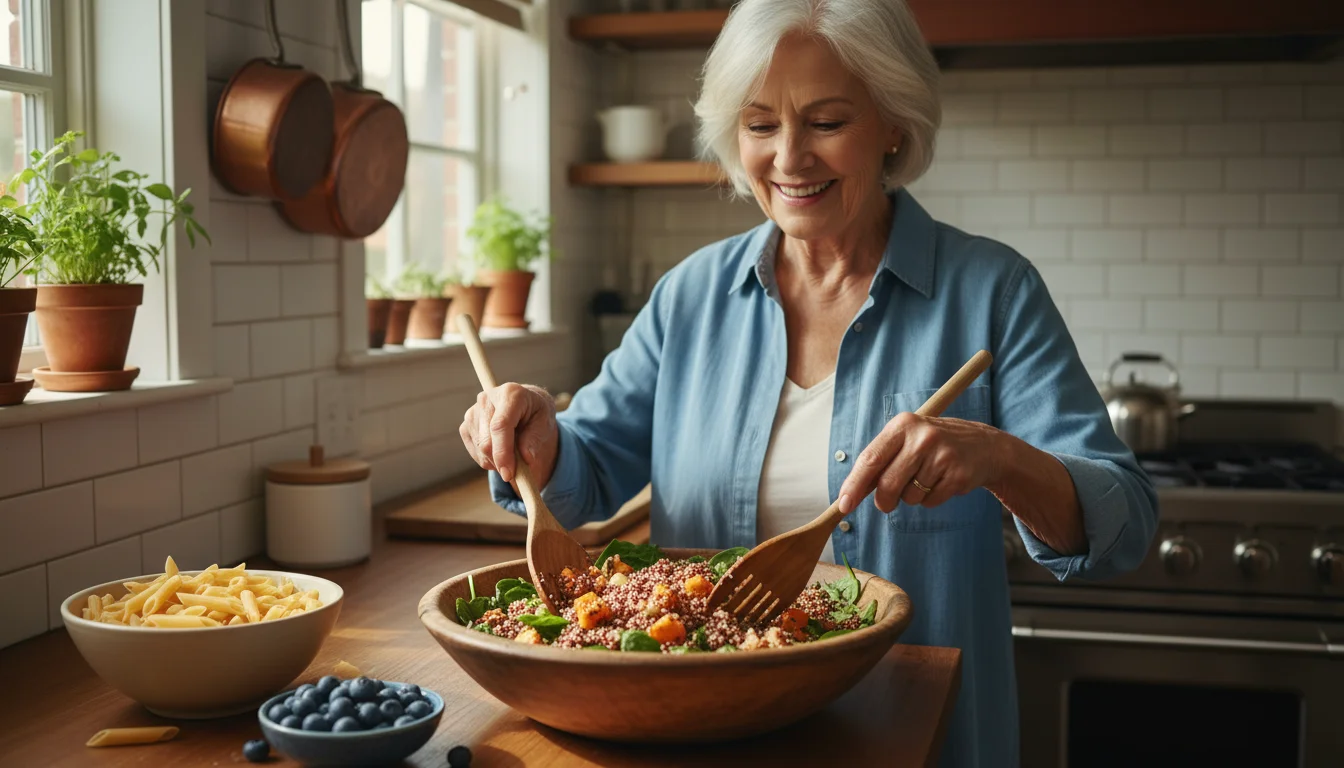
What to Do Instead: Focus on Fiber-Rich, Complex Carbohydrates
The goal is not to eliminate carbohydrates but to choose the right ones. A healthy diet for seniors should be built around nutrient-dense, complex carbohydrates that provide sustained energy and valuable fiber. Fiber is particularly important for older adults as it aids in digestion, helps prevent constipation, and can assist in managing cholesterol and blood sugar levels.
Excellent sources of complex carbohydrates include:
- Whole Grains: Oatmeal, brown rice, quinoa, barley, and whole-wheat bread and pasta.
- Starchy Vegetables: Sweet potatoes, corn, peas, and winter squash.
- Legumes: Lentils, black beans, chickpeas, and kidney beans are great sources of both complex carbs and protein.
- Fruits: All fruits contain natural sugars, but they also provide fiber, vitamins, and antioxidants. Berries, apples, and oranges are wonderful choices.
Try to make at least half of your grain intake whole grains. For instance, swap white rice for brown rice, choose whole-wheat bread over white, and start your day with a warm bowl of oatmeal instead of a sugary cereal.

Myth 4: A Multivitamin Can Replace a Healthy Diet
In a perfect world, a single pill could provide all the nutrients we need. This belief makes multivitamins very appealing, especially for seniors who may have a reduced appetite or find cooking to be a chore. However, it is a myth that a multivitamin can serve as a substitute for a balanced, whole-foods diet. While supplements can be useful for filling specific nutritional gaps, they cannot replicate the complex synergy of vitamins, minerals, fiber, and phytochemicals found in real food.
Food provides a package of nutrients that work together. For example, an orange contains vitamin C, but it also provides fiber, potassium, and antioxidants that you won’t find in a simple vitamin C pill. Relying solely on supplements means you miss out on these crucial components that protect your body from disease and support overall health. Furthermore, some vitamins can be harmful in high doses, and supplements are not regulated by the FDA in the same way as medications. Taking too much of certain nutrients can interfere with medications or cause health problems.

What to Do Instead: Use Food as Your Primary Source of Nutrients
Adopt a “food first” philosophy. Focus on building a colorful plate filled with a variety of fruits, vegetables, lean proteins, and whole grains. This approach ensures you are getting a wide spectrum of nutrients in their most natural and effective forms.
Supplements may be necessary in certain situations. For example, many older adults are deficient in Vitamin D, which is crucial for bone health, or Vitamin B12, which is important for nerve function and red blood cell production. However, you should never start taking a supplement without first consulting your doctor. They can perform blood tests to identify any actual deficiencies and recommend the appropriate supplement and dosage for your specific needs. Self-prescribing can be ineffective and potentially unsafe.

Myth 5: Losing Your Appetite is a Normal, Unavoidable Part of Aging
It is common for seniors to experience a decrease in appetite. Changes in taste and smell, dental problems, medication side effects, or simply being less active can all contribute to eating less. While these changes are common, a persistent loss of appetite should not be accepted as a normal or unavoidable part of getting older. It can be a red flag for underlying health issues and can lead to unintended weight loss, nutritional deficiencies, and frailty.
A poor appetite can create a dangerous cycle. When you do not eat enough, you feel weak and tired, which makes you less likely to prepare a meal or engage in activities. This, in turn, can worsen your appetite and lead to further health declines. It is vital to address the root cause of a diminished appetite rather than dismissing it.

What to Do Instead: Address the Causes and Focus on Nutrient-Dense Foods
If you or a loved one is experiencing a consistent loss of appetite, the first step is to talk to a doctor. They can rule out any medical conditions, review medications for side effects, and check for dental issues that might make chewing difficult. For mental health support, which can impact appetite, consult the National Institute of Mental Health (NIMH).
Once medical issues are addressed, you can try several strategies to make eating more appealing and effective:
- Eat Smaller, More Frequent Meals: Instead of three large meals, try five or six smaller, nutrient-rich mini-meals or snacks throughout the day. This can feel less daunting than a large plate of food.
- Focus on Nutrient Density: Since you may be eating less, make every bite count. Choose foods that are high in calories and nutrients. Add healthy fats like avocado or olive oil, or sprinkle nuts and seeds onto yogurt or oatmeal.
- Enhance Flavors: As taste buds can become less sensitive, use herbs, spices, and citrus juices to make food more flavorful without adding extra salt.
- Make Mealtimes Social: Eating with family or friends can turn a meal from a chore into an enjoyable social event, which can help stimulate appetite.
- Consider Liquid Nutrition: Smoothies or nutrient-rich shakes can be a great way to get calories and protein when solid food feels unappealing. You can blend in fruit, Greek yogurt, spinach, and a scoop of protein powder.

Key Signs It’s Time to Consult a Doctor
While improving your diet is a powerful tool for better health, it is not a replacement for professional medical care. It is crucial to know when to seek help. Please consult your physician or a registered dietitian if you experience any of the following:
- Unexplained Weight Loss or Gain: Losing or gaining weight without trying can be a sign of an underlying medical condition.
- Difficulty Chewing or Swallowing (Dysphagia): This can lead to poor nutrition and is a serious issue that requires medical evaluation.
- Persistent Digestive Problems: Ongoing constipation, diarrhea, bloating, or heartburn should be discussed with a doctor.
- Chronic Fatigue or Lack of Energy: While some tiredness is normal, persistent exhaustion could be a sign of a nutritional deficiency, such as iron-deficiency anemia.
- Sudden Changes in Appetite: A significant and lasting loss of appetite needs to be investigated by a healthcare professional.
- New or Worsening Chronic Conditions: If you are managing a condition like diabetes or heart disease, any dietary changes should be made in consultation with your healthcare team.

Making It a Part of Your Daily Routine
Incorporating these nutritional truths into your life does not have to be complicated. The key is to make small, sustainable changes that you can stick with over the long term. Here are a few practical tips to make healthy eating a regular part of your routine:
- Plan Your Meals: Take a little time each week to plan your meals and make a grocery list. This helps ensure you have healthy ingredients on hand and reduces the temptation to opt for less-healthy convenience foods.
- Stay Hydrated: Dehydration can cause fatigue and confusion. Sip water throughout the day. If you find plain water boring, try infusing it with lemon, cucumber, or berries.
- Read Nutrition Labels: Get into the habit of reading labels to check for sodium, added sugars, and unhealthy fats. This empowers you to make more informed choices at the grocery store.
- Cook in Batches: If cooking every day feels tiring, try preparing larger batches of healthy meals like soups, stews, or roasted vegetables. You can portion them out for easy meals throughout the week.
- Listen to Your Body: Pay attention to your body’s hunger and fullness cues. Eat when you are hungry and stop when you are satisfied, not overly full.
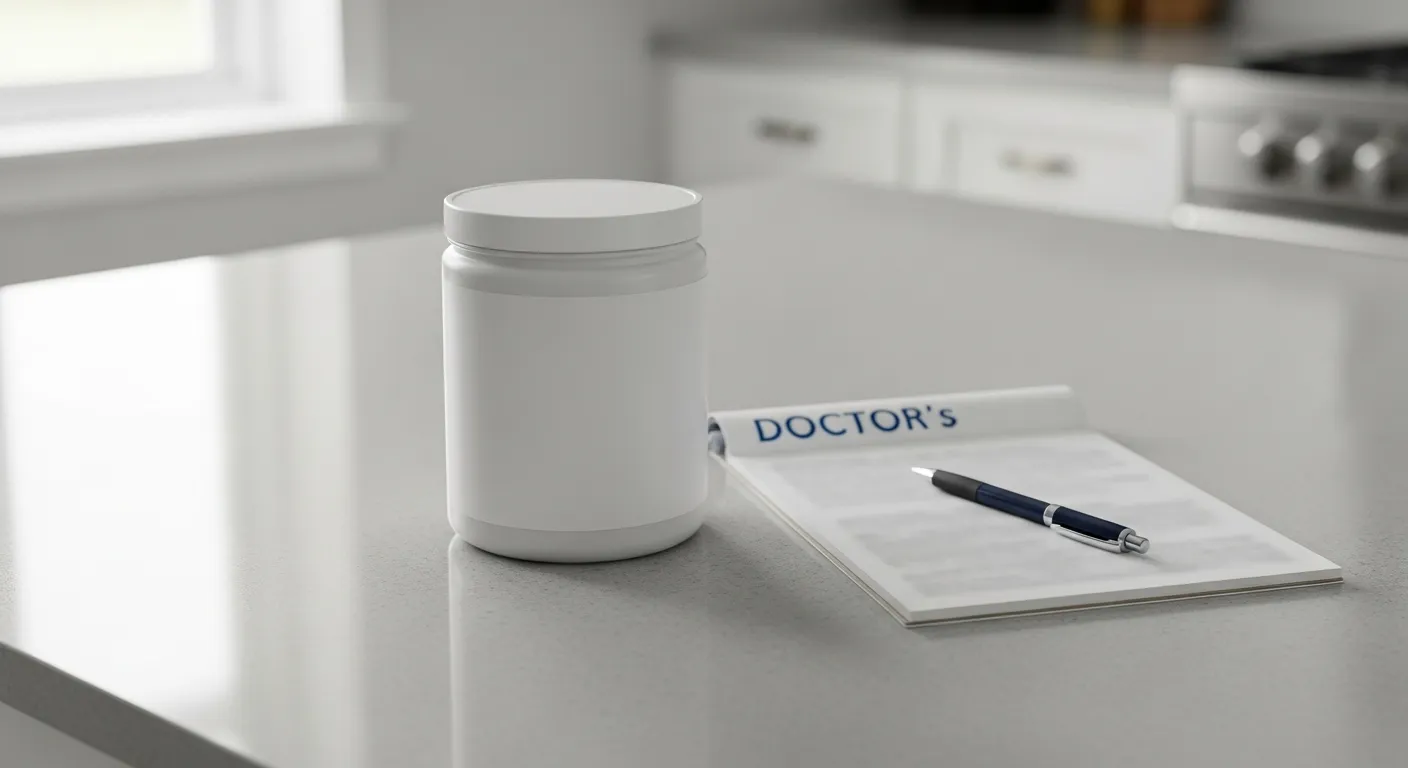
Frequently Asked Questions
1. Are nutritional supplements, like protein shakes or meal replacements, safe for seniors?
For some seniors, particularly those with a poor appetite or difficulty chewing, nutritional supplements can be a safe and effective way to get needed calories and nutrients. However, they should not be used as a long-term replacement for whole foods. It is essential to choose a high-quality product without excessive added sugars. Always talk to your doctor or a registered dietitian before starting any supplement to ensure it is appropriate for your health needs and won’t interact with your medications.
2. How much water should I be drinking every day?
Hydration needs vary based on activity level, climate, and overall health. A general guideline is to aim for 6-8 glasses of fluid per day. This doesn’t have to be just water; milk, soup, and even fruits and vegetables contribute to your total fluid intake. A good indicator of proper hydration is the color of your urine—it should be a light, pale yellow. If you have conditions like kidney or heart failure, your doctor may have specific fluid restrictions for you.
3. Does Medicare cover nutrition counseling with a registered dietitian?
Yes, in many cases. Medicare Part B may cover medical nutrition therapy (MNT) services if you have diabetes, kidney disease, or have had a kidney transplant. Some Medicare Advantage (Part C) plans may offer broader coverage for nutrition counseling as part of their wellness benefits. It is always best to check your specific plan’s benefits. For insurance and medical coverage questions, refer to Medicare.gov.
4. I live alone and don’t like to cook. What are some easy, healthy meal ideas?
Simplicity is key. Try a rotisserie chicken from the grocery store, which can be used for several meals alongside a simple bagged salad or steamed vegetables. Cottage cheese with fruit, a hard-boiled egg with whole-wheat toast, or a bowl of oatmeal with nuts and berries are all quick and nutritious options. Canned tuna or salmon mixed with Greek yogurt (instead of mayonnaise) on whole-grain crackers is another easy, protein-packed meal.
Disclaimer: This article is for informational purposes only and does not constitute medical advice. The content is not intended to be a substitute for professional medical advice, diagnosis, or treatment. Always seek the advice of your physician or other qualified health provider with any questions you may have regarding a medical condition.
|
Fact-Checked Content
Our editorial team reviews all content for accuracy and updates it regularly. Learn about our editorial process →
|


